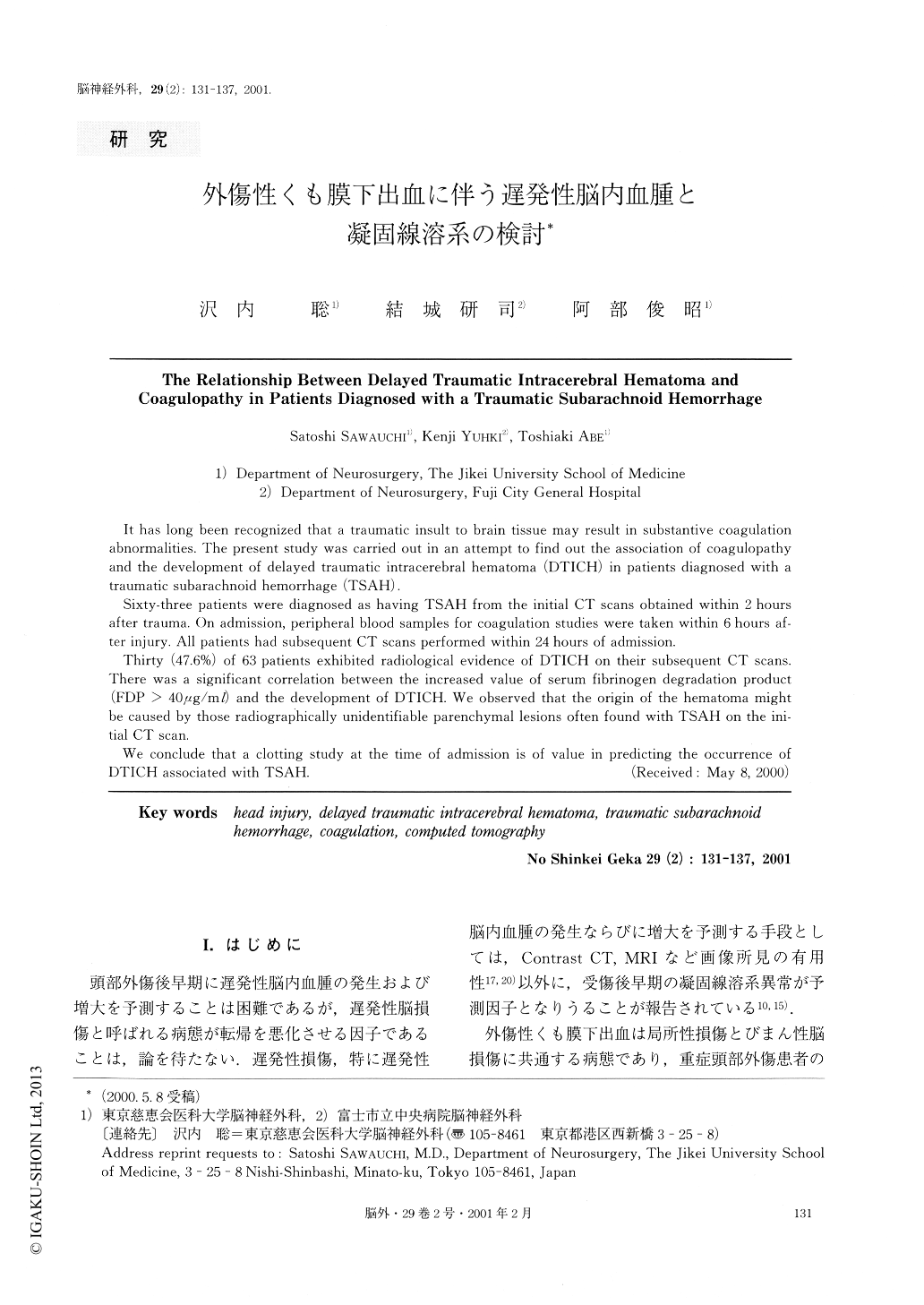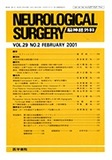Japanese
English
- 有料閲覧
- Abstract 文献概要
- 1ページ目 Look Inside
I.はじめに
頭部外傷後早期に遅発性脳内血腫の発生および増大を予測することは困難であるが,遅発性脳損傷と呼ばれる病態が転帰を悪化させる因子であることは,論を待たない.遅発性損傷,特に遅発性脳内血腫の発生ならびに増大を予測する手段としては,Contrast CT, MRIなど画像所見の有用性17,20)以外に,受傷後早期の凝固線溶系異常が予測因子となりうることが報告されている10,15).
外傷性くも膜下出血は局所性損傷とびまん性脳損傷に共通する病態であり,重症頭部外傷患者の初回CTにおいて23.4〜39%に認められる所見である3,9,11).その出血の拡がりは神経学的重症度を反映し,遅発性脳内血腫の初期病変としても重要であると指摘されている6,11,14).また,外傷性くも膜下出血に合併する頭蓋内病変としては,脳挫傷,脳内血腫,急性硬膜下血腫の頻度が高いと報告されている9,11).今回われわれは,外傷性くも膜下出血例における受傷後早期の凝固線溶系異常が,経時的CT上での挫傷性脳内血腫の発現に対する早期予測因子として有用であるか否かについて検討した.
It has long been recognized that a traumatic insult to brain tissue may result in substantive coagulationabnormalities. The present study was carried out in an attempt to find out the association of coagulopathyand the development of delayed traumatic intracerebral hematoma (DTICH) in patients diagnosed with atraumatic subarachnoid hemorrhage (TSAH).
Sixty-three patients were diagnosed as having TSAH from the initial CT scans obtained within 2 hoursafter trauma. On admission, peripheral blood samples for coagulation studies were taken within 6 hours af-ter injury. All patients had subsequent CT scans performed within 24 hours of admission.
Thirty (47.6%) of 63 patients exhibited radiological evidence of DTICH on their subsequent CT scans.There was a significant correlation between the increased value of serum fibrinogen degradation product(FDP>40μg/ml) and the development of DTICH. We observed that the origin of the hematoma mightbe caused by those radiographically unidentifiable parenchymal lesions often found with TSAH on the ini-tial CT scan.
We conclude that a clotting study at the time of admission is of value in predicting the occurrence ofDTICH associated with TSAH.

Copyright © 2001, Igaku-Shoin Ltd. All rights reserved.


